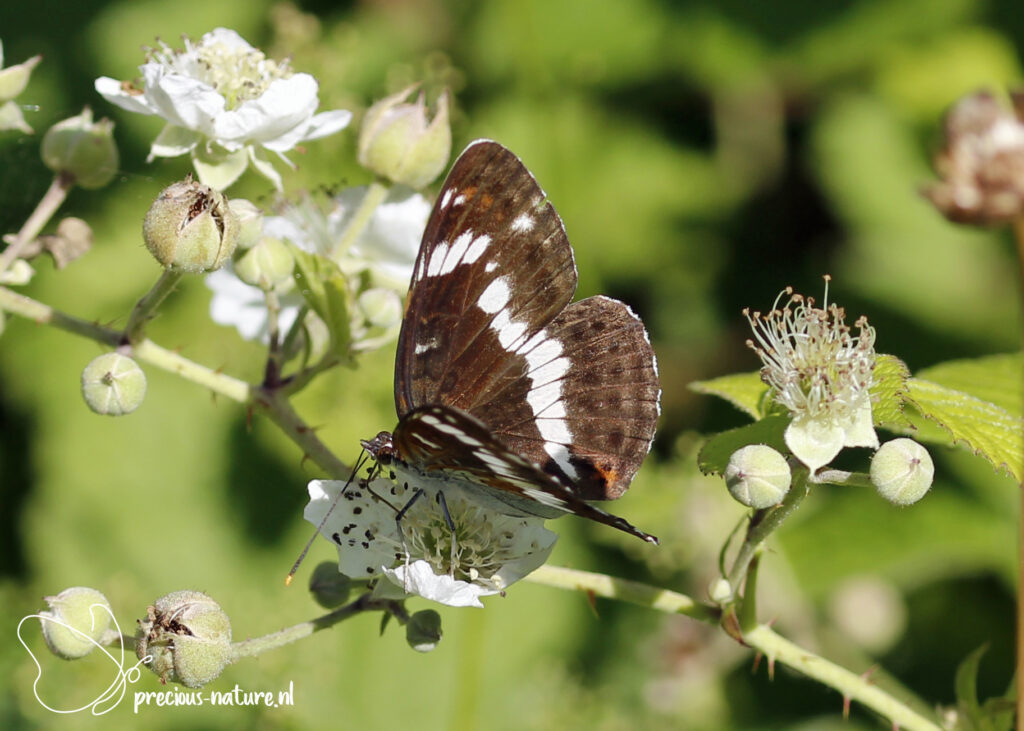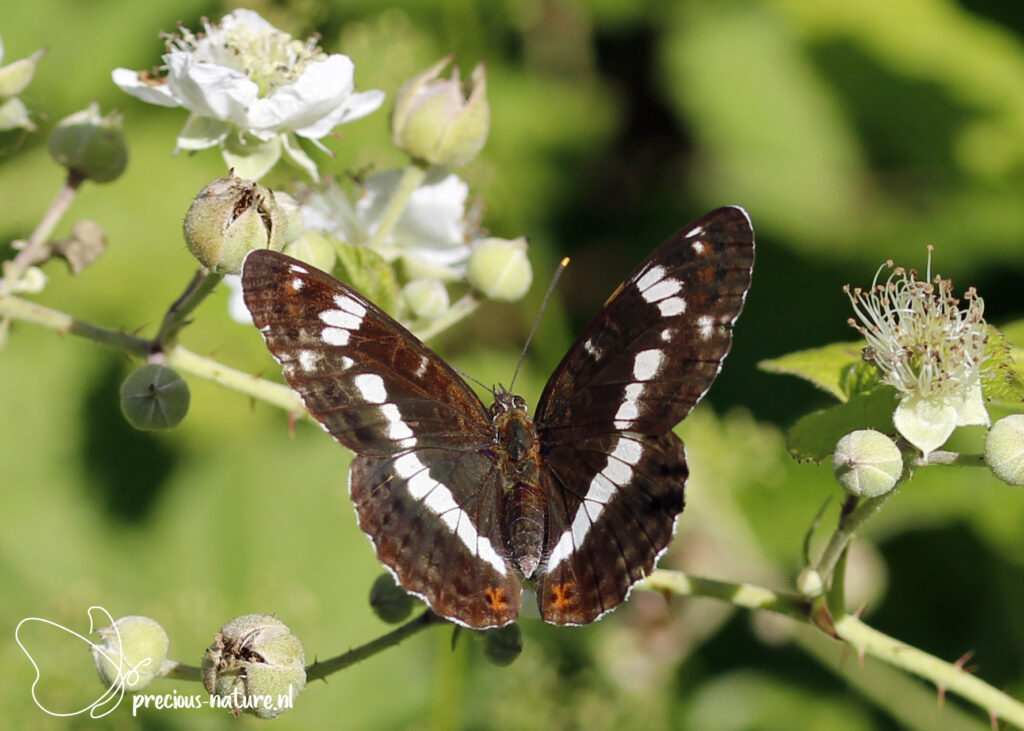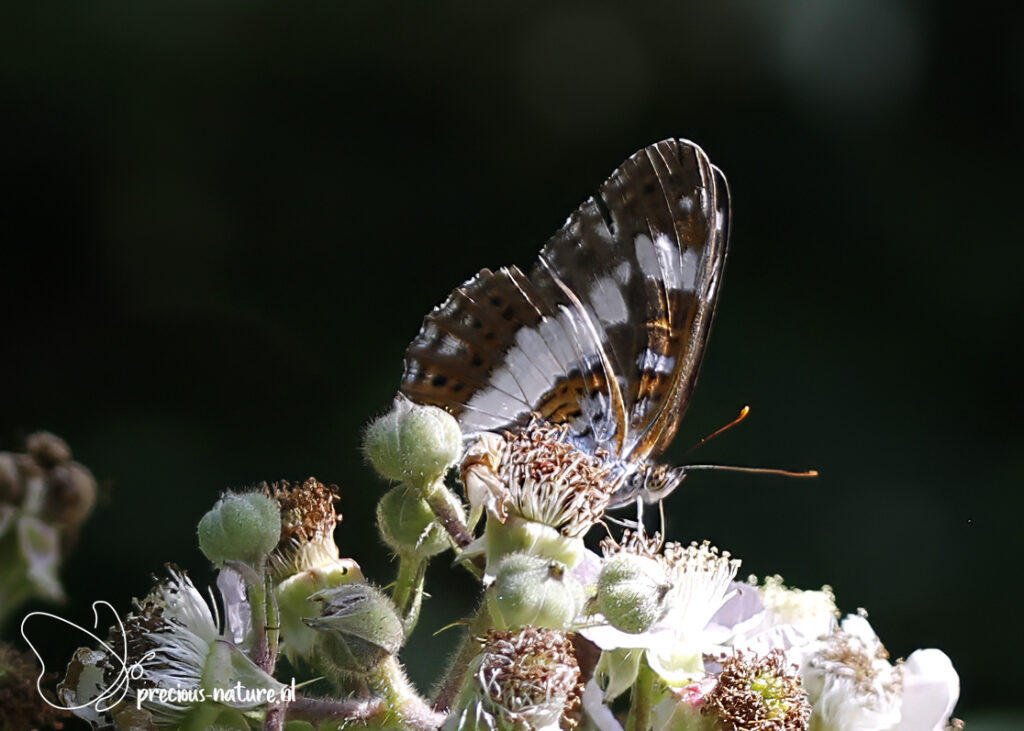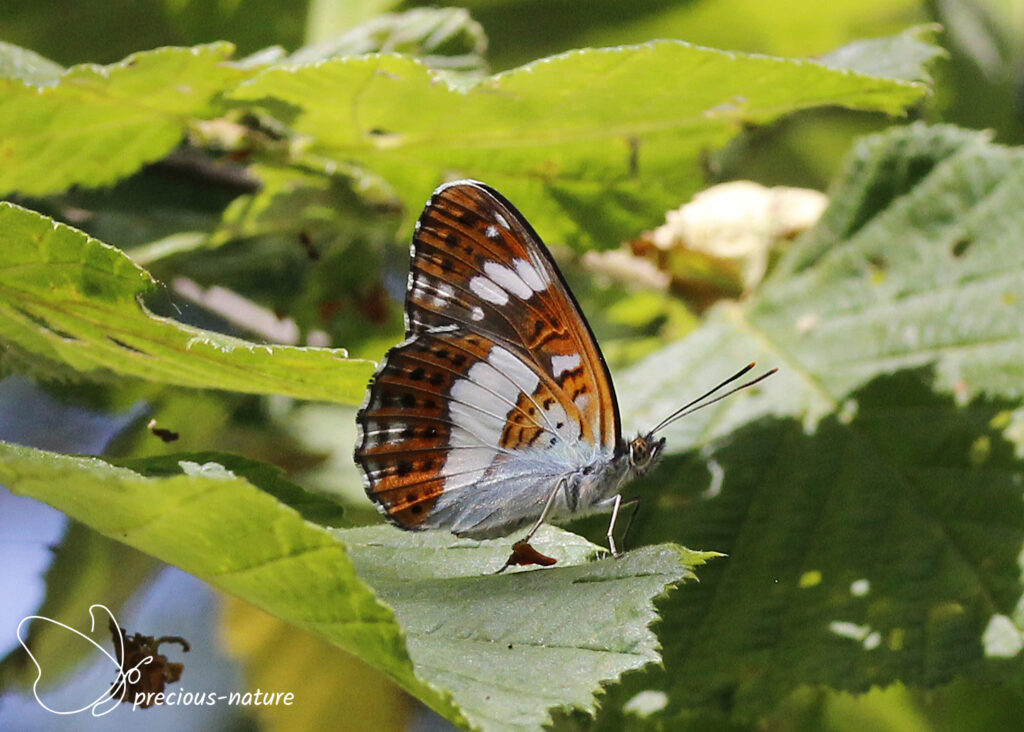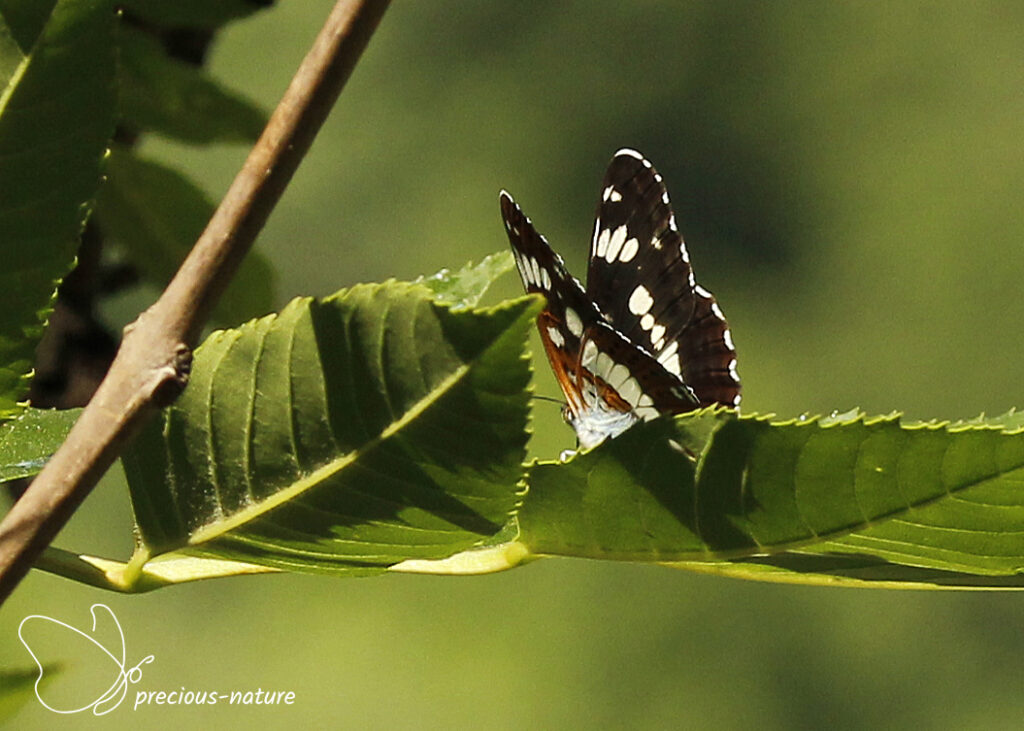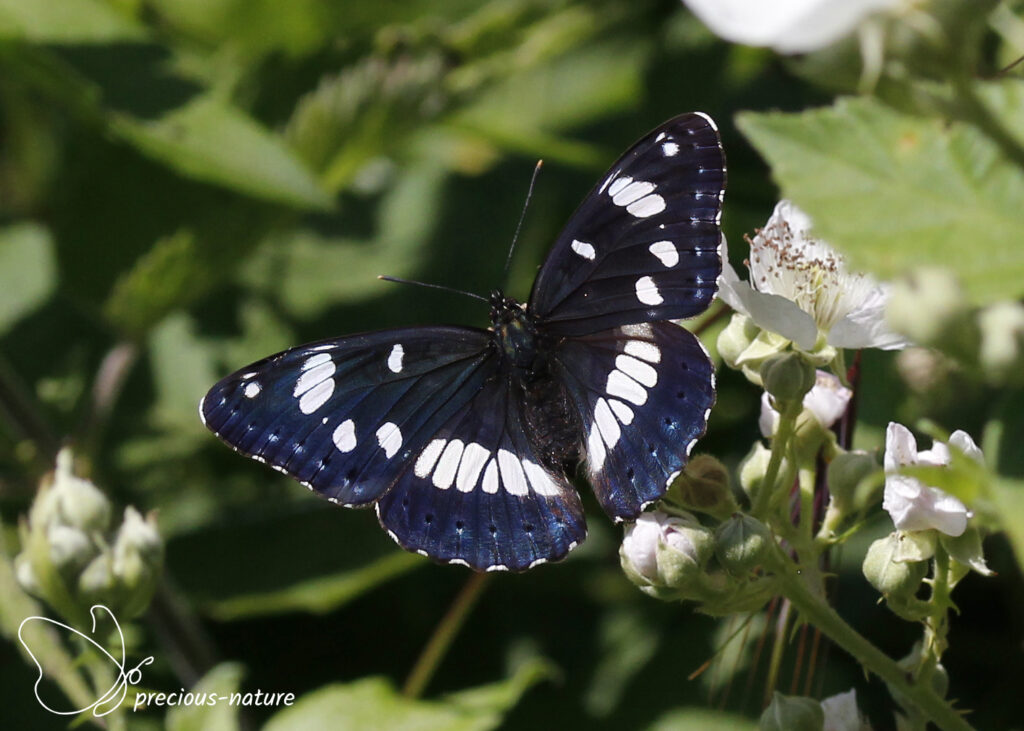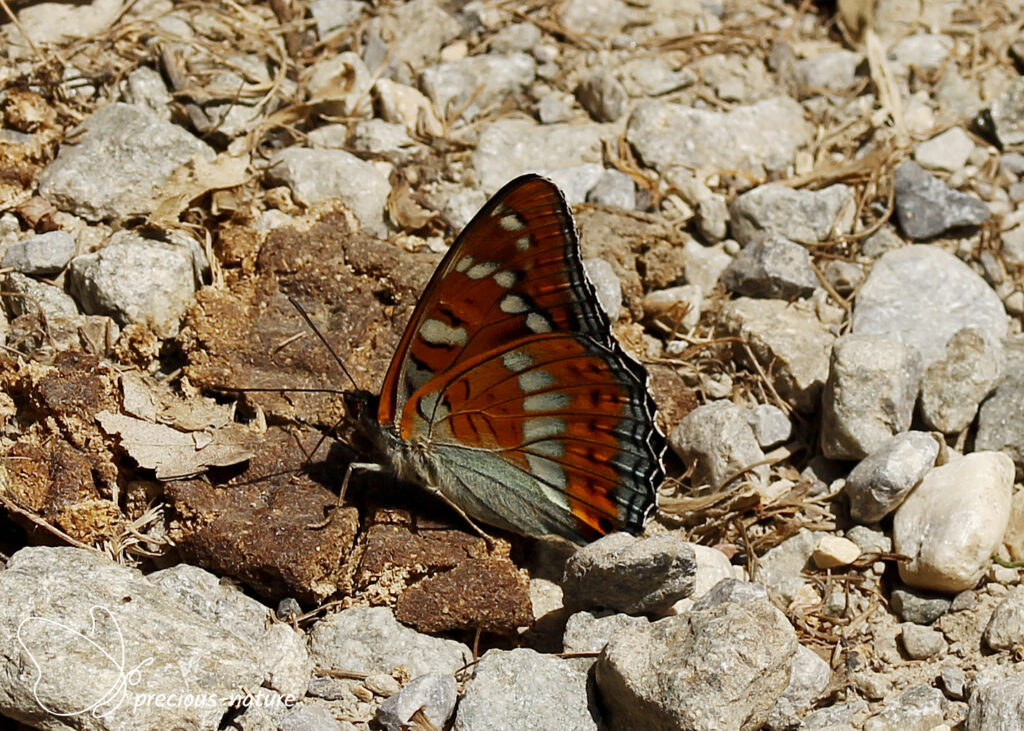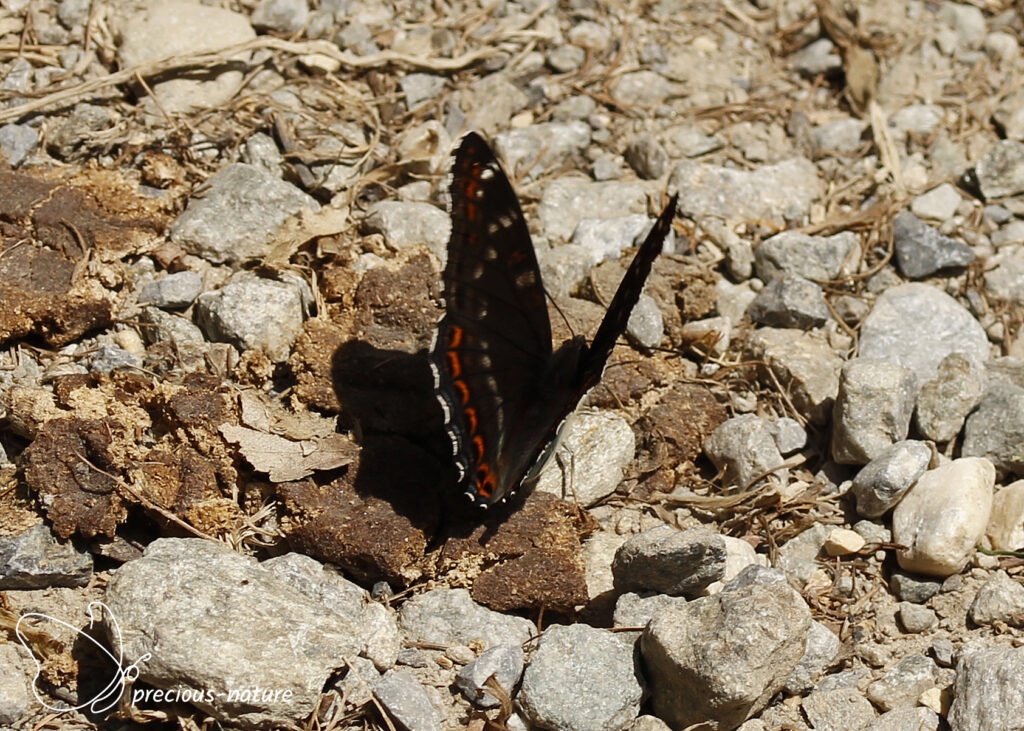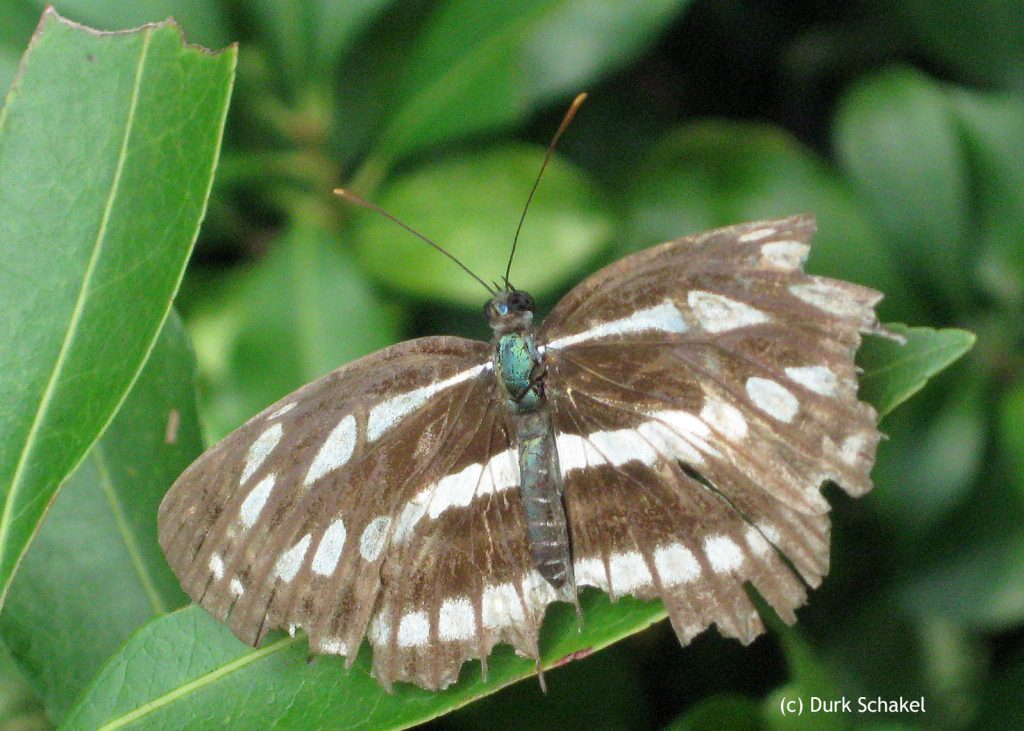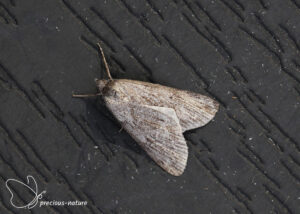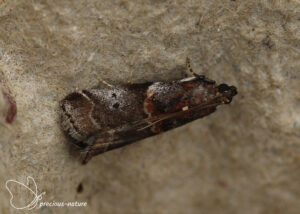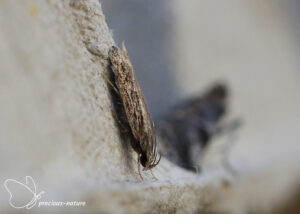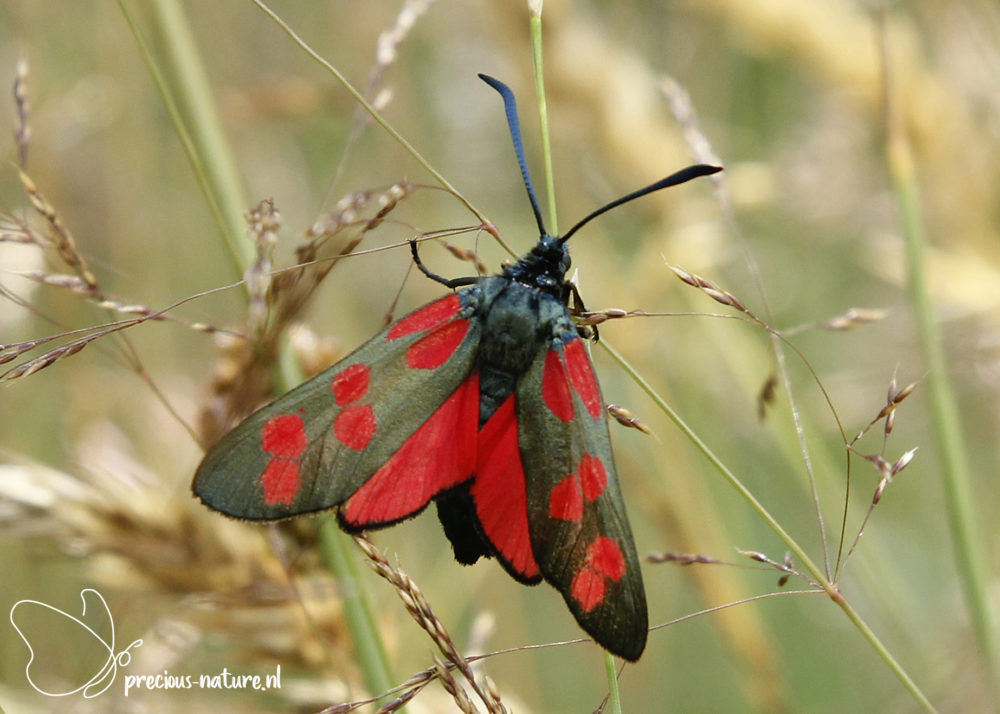Admirals and relatives, sometimes called ‘gliders’ (Limenitidinae), are butterflies common in woody areas. They belong to the family of Brush-footed butterflies (Nymphalidae). The common names of many species reference military ranks. In particular, the light stripe running lengthwise across the wings of many species has reminded earlier authors of officers’ shoulder marks. The upper side of the wing is dark brown or black with a white band and a few white spots. Only 5 species occur in Europe.
Tribe: Limenitidini
Genus: Limenitis
White Admiral – 2019 (NL)
(NCBI-index: 270466)
The advantage of visiting other regions is that you also encounter other species of butterflies that I do not experience in the North of the Netherlands. In Gelderland, I was very happy to encounter the White Admiral (Limenitis camilla). A butterfly with high contrast in colours when you look at the top and underside of the wings. The top is dark brown in the female and black in the male, with a row of concatenated white oblong spots. The underside is orange-brown with a double row of black hem and moon spots. Also, on the underside is a row of consecutive white oblong spots. It has a distinctive and delicate flight, characterised by short periods of wingbeats followed by long glides. The wingspan is 60-64 mm. The flight period spans one to two generations, typically occurring from June to September. Host plant: Honeysuckle, Wild Berries. Dutch name: Kleine ijsvogelvlinder. Frisian name: Lytse iisfûgelflinter.
Flying period:

Tribe: Limenitidini
Genus: Limenitis
Southern White Admiral – 2025 (IT)
(NCBI-index: 191421)
One of the most attractive butterflies, a superb glider with its distinctive flight pattern. The Southern White Admiral (Limenitis reducta) can soar over great distances, occasionally alternating with a few rapid wingbeats. It prefers warm to very warm locations in forests near streams and other damp places. Superficially, the Southern White Admiral resembles the White Admiral (Limenitis camilla), but the differences are pretty significant. The underside of the hindwing has a striking silver colour and a reddish-brown zone with a single row of black postdiscal spots. In the White Admiral, this is an orange-red zone with a double row of postdiscal spots. The most striking difference is the blue sheen of the upperside of the wings. This is particularly noticeable in fresh specimens. The flight period spans one generation from May to June, and a second generation may occur from mid-July to August, depending on the location. The wingspan is 45 to 55 mm. Host plant: Wild Honeysuckle. Dutch name: Blauwe ijsvogelvlinder. Frisian name: –
Flying period:

Tribe: Limenitidini
Genus: Limenitis
Poplar Admiral – 2025 (IT)
(NCBI-index: 227535)
Many will have it on their wish list, but few actually get to see it. During my trip to the Maritime Alps, luck was on my side, and the Poplar Admiral (Limenitis populi) landed on the path right in front of me. It is a massive butterfly with a large wing surface. The females are even larger than the males. The ground colour of the upperside of the wings is dark brown with white spots arranged in a row on the hindwing. Moon-shaped orange spots appear in the submarginal portion of the hindwing, and the marginal zone is blue to blue-grey. The underside of the wings is predominantly orange with a unique blue zone along the trailing edge. Here, too, you see white spots arranged in a row on the hindwing and more scattered on the forewing. The flight period is one generation from late May to late July, and the wingspan is 80-90 mm. Host plant: Aspen, Black Poplar. Dutch name: Grote ijsvogelvlinder. Frisian name: Skylger flinter.
Flying period:

Tribe: Neptini
Genus: Neptis
Common Glider – 2010 (JP)
(NCBI-index: 270468)
The Common Glider (Neptis Sappho) is a butterfly that flies very locally in Southeastern Europe in two generations from May to August. It is especially common in hot and damp woodlands along rivers and streams that are overgrown with Robinia. The forewing is elongated, with a row of white seam spots on the fore and hindwing on both the top and underside. The wingspan is 40-46 mm. Host plant: Black Pea and Spring Pea. Dutch name: Lathyruszwever. Frisian name: –
Flying period:
![]()

